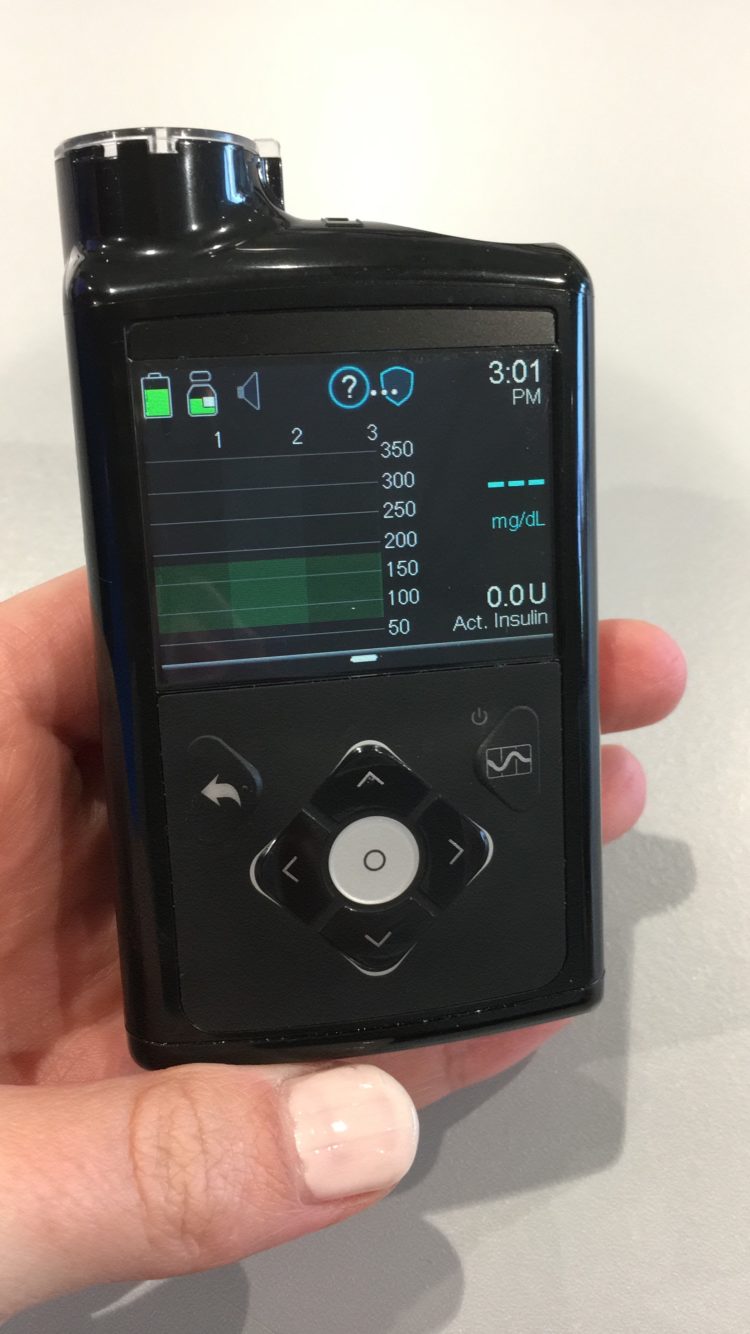Last week I had the privilege of attending the Medtronic Diabetes Community Exchange in Tolochenaz, Switzerland. Along with 14 other bloggers from the UK, Finland, the Netherlands, Belgium, Sweden and Switzerland I had the chance to have a look at the newly released Minimed 670g Insulin pump.
Let me give you a few points that stood out from that day about the new pump and diabetes management in general. Also I want to point out that all the pictures were taken with my phone, so the quality might not be the best, sorry :).
Time in range
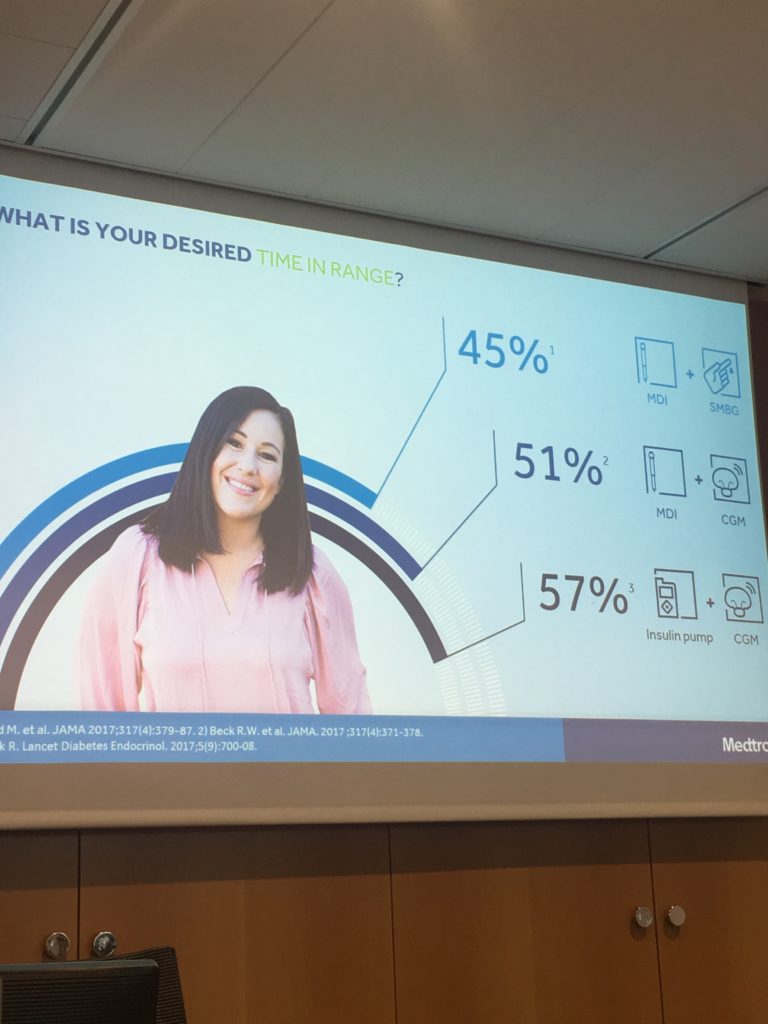 Dr. Ohad Cohen, the medical affairs director talked about the importance of the time in range. Nowadays most diabetics get “judged“ based on their A1c. Now that is not just a bad thing but the problem is, that you can get a good A1c but spend a lot of time out of range (so in Hypo- oder Hyperglycemia). The goal sould be to be in range as much as possible. A study showed that on average people on MDI are in range 45% of the time, people on MDI and a CGM 51% and people on a pump and a CGM 57% of the time. This to me is alarming. The goal should be to be in range as much as possible. Now we all know how diabetes can play its tricks on us so I doubt that 100% in range is possible but the number should be higher than 57%. This is where the Minimed 670g comes in. It was proven that diabetics that are on the pump (US-Study, since the pump was released there a year ago) could significantly bring their time in range up.
Dr. Ohad Cohen, the medical affairs director talked about the importance of the time in range. Nowadays most diabetics get “judged“ based on their A1c. Now that is not just a bad thing but the problem is, that you can get a good A1c but spend a lot of time out of range (so in Hypo- oder Hyperglycemia). The goal sould be to be in range as much as possible. A study showed that on average people on MDI are in range 45% of the time, people on MDI and a CGM 51% and people on a pump and a CGM 57% of the time. This to me is alarming. The goal should be to be in range as much as possible. Now we all know how diabetes can play its tricks on us so I doubt that 100% in range is possible but the number should be higher than 57%. This is where the Minimed 670g comes in. It was proven that diabetics that are on the pump (US-Study, since the pump was released there a year ago) could significantly bring their time in range up.
No more set basal rate
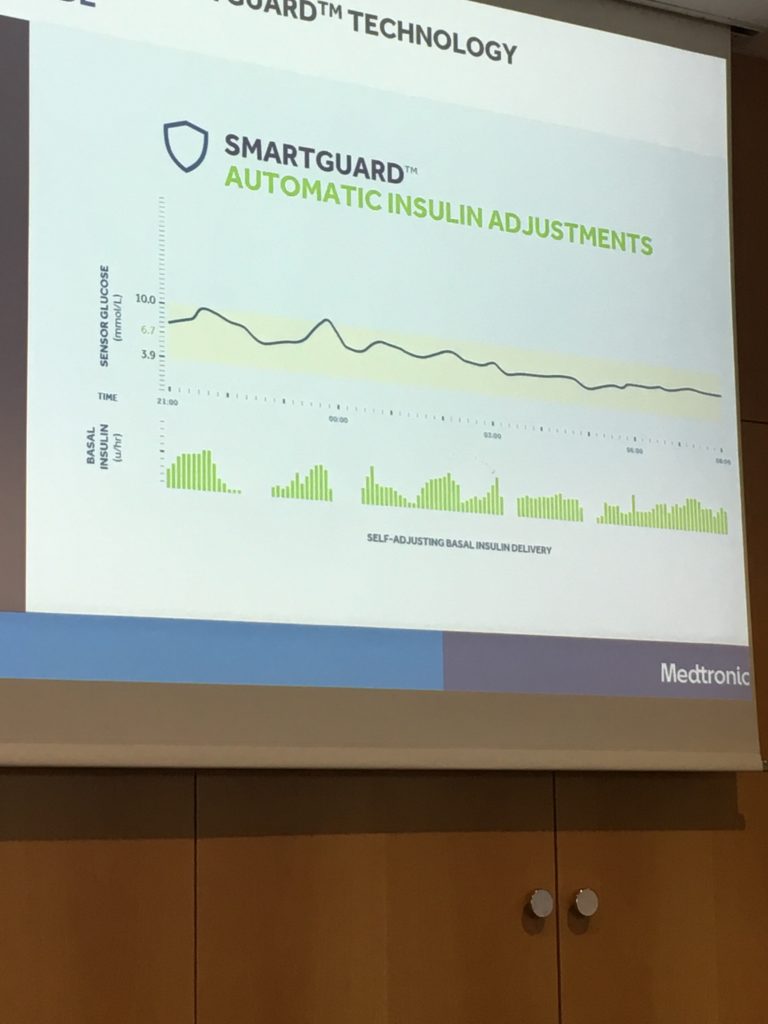 Unless the Minimed 640g the new 670g doesn’t have a set basal rate. This might sound confusing but bear with me for a second. With the current pumps you look at the data from the last few months and make adjustments to your basal rate accordingly. We are treating the future according to the past. This can’t be the solution. What the Minimed 670g does is adjust your basal every 5 minutes. It works with different parameters that are constantly gaining information through your CGM and adjust the basal to that effect to try and target 6.7 mmol/l. This is set in the pump and can’t be changed at the moment. The only exception is a target of 8.3 mmol/l for exercising and such but you can only set that for a few hours at times.
Unless the Minimed 640g the new 670g doesn’t have a set basal rate. This might sound confusing but bear with me for a second. With the current pumps you look at the data from the last few months and make adjustments to your basal rate accordingly. We are treating the future according to the past. This can’t be the solution. What the Minimed 670g does is adjust your basal every 5 minutes. It works with different parameters that are constantly gaining information through your CGM and adjust the basal to that effect to try and target 6.7 mmol/l. This is set in the pump and can’t be changed at the moment. The only exception is a target of 8.3 mmol/l for exercising and such but you can only set that for a few hours at times.
While the pump does a lot for you, you can’t just let it work and do nothing. You still have to bolus for your meals. It has a bolus wizard function that is similar to the current one in the 640g.
Manual mode vs. Smart guard auto mode
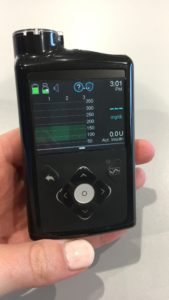
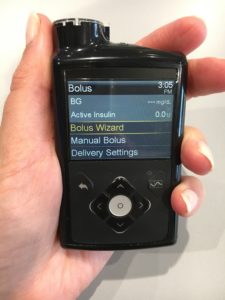
Both pictures show the pump on auto mode
You can use the pump on two different modes: manual or auto. On the manual mode you get the features from the 640g: suspend on low and suspend before low. This is also the mode where you can still give dual boluses and you have your set basal rate.
On auto mode you get the 5 minute basal that I described above. When you first start out you need to be on manual mode for 3 days, so that the pump can get to know your algorithm and adjust. After those initial 3 days you can go on auto mode.
Guardian 3 transmitter and sensor
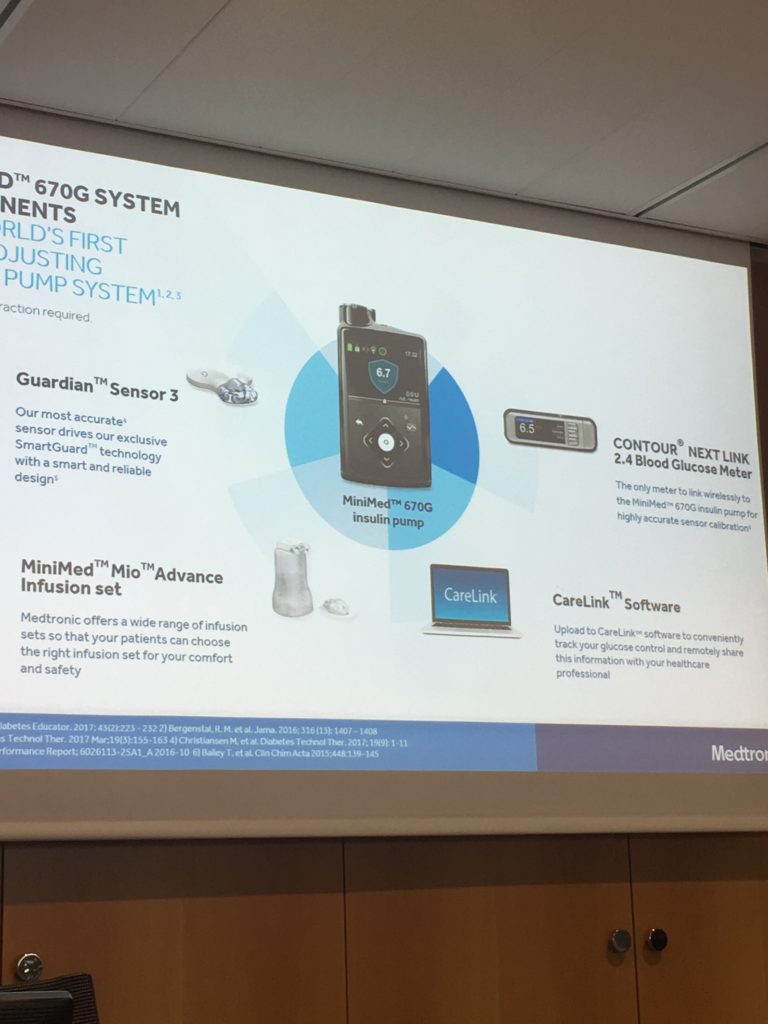 The new pump comes with a new sensor and transmitter. While it looks the same as the old one, it has some new features:
The new pump comes with a new sensor and transmitter. While it looks the same as the old one, it has some new features:
- Duration: It lasts for 7 and not only 6 days.
- Wear: the guardian 3 is approved to be worn on the arm (the old one isn’t but I wear it on the arm nonetheless).
- Warm up: 45 minutes. The current warm up takes 2 hours so that is a major difference.
The sensor is the key to the whole system. If you don’t want to wear a cgm or you want a cgm from another brand, the Minimed 670g is not for you. Simple put: non sensor, no auto mode.
You can get the new transmitter and sensor even if you are not on the Minimed 670g. They are compatible with the 640g system, so you just have to ask your doctor to write you a prescription for the new one if you want it.
Tips from a pro
We had the pleasure to ask Rob Howe some questions about the system. He’s been on the pump for about a year now and he spilled all his secrets with us.
- You are not smarter than the machine, trust the system. He said it took him about 4-6 weeks to adjust.
- The mental burden is less, since you’re not constantly worrying about your numbers.
- You need to relearn how to count carbs. He found that often times his counting on the Minimed 670g was off in the beginning because basal insulin was involved before.
- Don’t over treat your hypos! If you do, the pump will have a hard time with you going high and adjusting to get you down again. You might even have to give an additional bolus.
- PATIENCE is the key –> be willing to adjust the way you’ve been managing your diabetes.
- Don’t calibrate when your out of range, the sensor will not like it and it could kick you out off auto mode for a while.
Additional infos
For all my swiss readers, this page explains the new pump in german:
https://mmc.medtronic-diabetes.ch/minimed670g/de_ch
The pump should be available for patients in Switzerland starting this week.
If you want more infos about the event and/or the pump, Melanie wrote some fantastic posts over on her blog:
http://www.lifesportdiabetes.co.uk/2018/10/the-background-to-new-minimed-670g.html
http://www.lifesportdiabetes.co.uk/2018/10/discovering-medtronic-minimed-670g.html
If you have any questions, please leave them in the comments down below, I’ll try to answer them to the best of my abilities.
I want to thank Medtronic for inviting me and providing my journey and accommodation. I am in no way bound by contract to post about the event.

